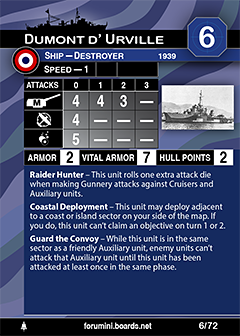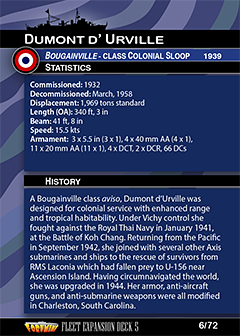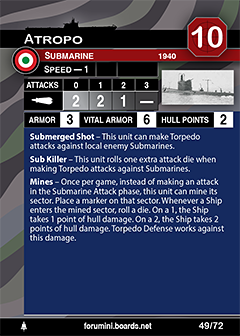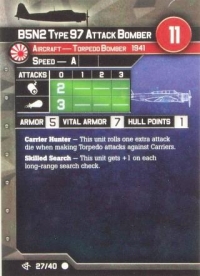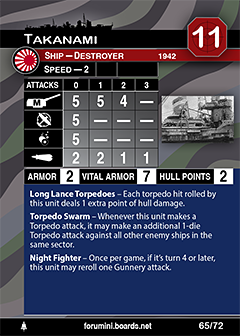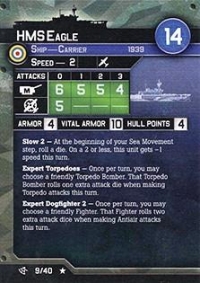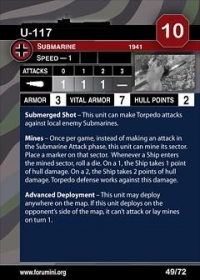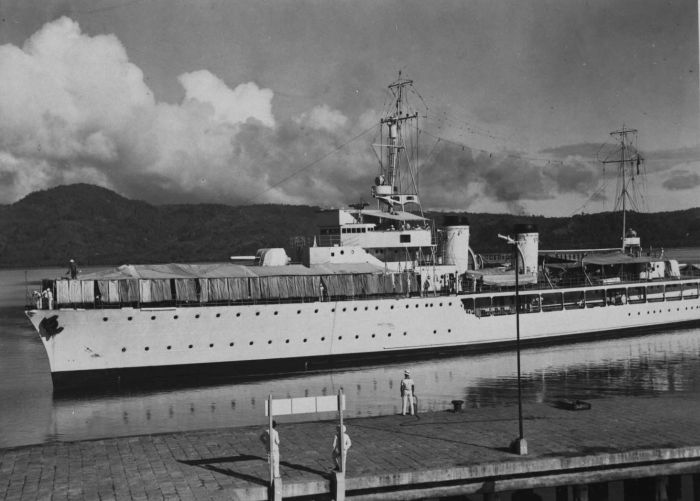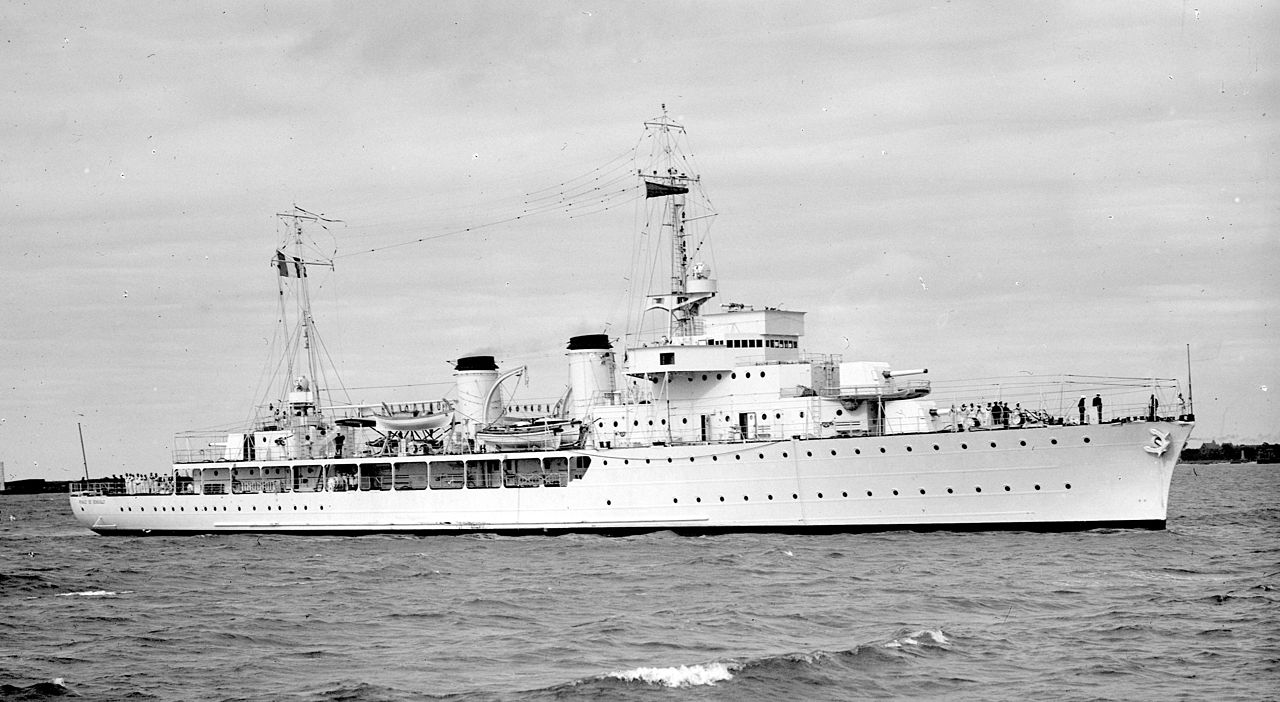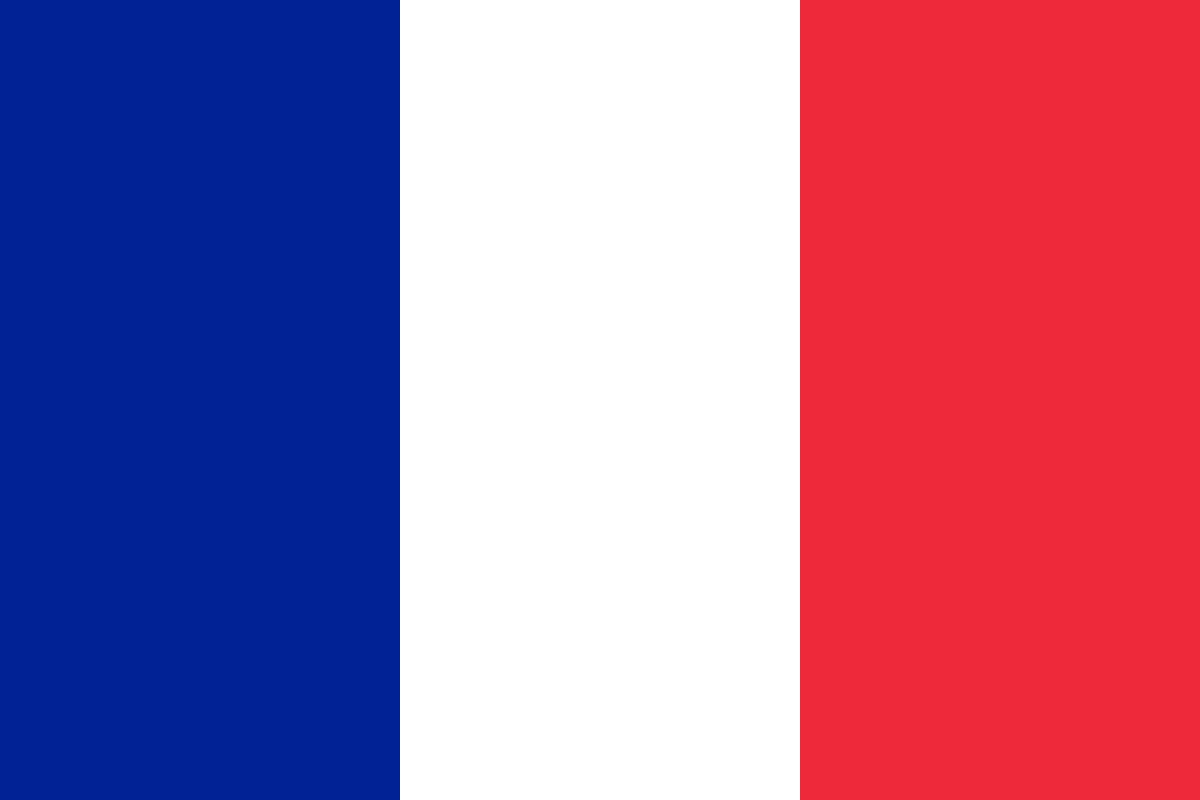Prototype: Dumont d'Urville was a Bougainville-class aviso of the French Navy, designed to operate from French colonies in Asia and Africa. She was built by Ateliers et Chantiers Maritime Sud-Ouest of Bordeaux and launched on 21 March 1931. After the Fall of France Dumont d'Urville remained under Vichy French control and in September 1940 she was in New Caledonia as a part the Vichy government's attempt to gain control of the French colony. However, the Royal Australian Navy cruiser Adelaide arrived carrying a Free French temporary governor, which led the Vichy governor to depart aboard Dumont d'Urville on 25 September.
On the night of 16–17 January 1941 Dumont d'Urville took part in the Battle of Koh Chang. In September 1942 Dumont d'Urville took part in rescuing survivors from RMS Laconia which the German submarine U-156 had torpedoed and sunk, known as the Laconia incident. By 1944 Dumont d'Urville's armament had been augmented with the addition of four single-mounted 40 mm anti-aircraft (AA) guns, 11 single-mounted 20 mm AA guns, four anti-submarine mortars and two racks for 66 depth charges.
Dumont d'Urville remained in French Navy service after the war until 26 March 1958 when she was scrapped.
On the night of 16–17 January 1941 Dumont d'Urville took part in the Battle of Koh Chang. In September 1942 Dumont d'Urville took part in rescuing survivors from RMS Laconia which the German submarine U-156 had torpedoed and sunk, known as the Laconia incident. By 1944 Dumont d'Urville's armament had been augmented with the addition of four single-mounted 40 mm anti-aircraft (AA) guns, 11 single-mounted 20 mm AA guns, four anti-submarine mortars and two racks for 66 depth charges.
Dumont d'Urville remained in French Navy service after the war until 26 March 1958 when she was scrapped.
Class History: The Bougainville class was a group of colonial avisos, or sloops, built for the French Navy during the 1930s. They were designed to operate in the remote locations of the French Empire.
The Bougainville-class ships were armed with three 40-caliber Canon de 138.6-millimetre (5.46 in) mle 1927 guns in single mounts, one superfiring pair forward of the superstructure and the third gun atop the aft superstructure.[4] The mounts had a range of elevation from -10° to +28°, which gave the gun a range of 16,600 meters (18,200 yd) at maximum elevation,. They fired 40.6-kilogram (90 lb) projectiles at a muzzle velocity of 700 m/s (2,300 ft/s) at a rate of five to six rounds per minute. The fore and aft magazines had a total capacity of 785 shells. The ships were fitted with a 3-metre (9 ft 10 in) Mle 1932 coincidence rangefinder that fed data to the type aviso mechanical fire-control computer.
The Bougainville-class ships were armed with three 40-caliber Canon de 138.6-millimetre (5.46 in) mle 1927 guns in single mounts, one superfiring pair forward of the superstructure and the third gun atop the aft superstructure.[4] The mounts had a range of elevation from -10° to +28°, which gave the gun a range of 16,600 meters (18,200 yd) at maximum elevation,. They fired 40.6-kilogram (90 lb) projectiles at a muzzle velocity of 700 m/s (2,300 ft/s) at a rate of five to six rounds per minute. The fore and aft magazines had a total capacity of 785 shells. The ships were fitted with a 3-metre (9 ft 10 in) Mle 1932 coincidence rangefinder that fed data to the type aviso mechanical fire-control computer.
Country: France is one of Europe’s largest countries. It is bordered by six countries other nations: Germany, Belgium and Luxembourg to the northeast, Switzerland and Italy to the southeast and Spain to the southwest. The United Kingdom borders France via the English Channel. The country is considered to be the gateway to Europe as there are several large international airports (two of these can be found in Paris), ferry terminals and the French rail service.
In 486, Frankish tribes unified under Merovingian kingship. In 843, Western Francia was established from the division of the Carolingian Empire. In 1789, the French monarchy was overthrown, and in 1792, the First French Republic was founded. In 1958, the Fifth French Republic was established.
In 486, Frankish tribes unified under Merovingian kingship. In 843, Western Francia was established from the division of the Carolingian Empire. In 1789, the French monarchy was overthrown, and in 1792, the First French Republic was founded. In 1958, the Fifth French Republic was established.
Item created by: gdm on 2019-12-10 08:16:14. Last edited by gdm on 2022-10-10 12:19:21
If you see errors or missing data in this entry, please feel free to log in and edit it. Anyone with a Gmail account can log in instantly.
If you see errors or missing data in this entry, please feel free to log in and edit it. Anyone with a Gmail account can log in instantly.


